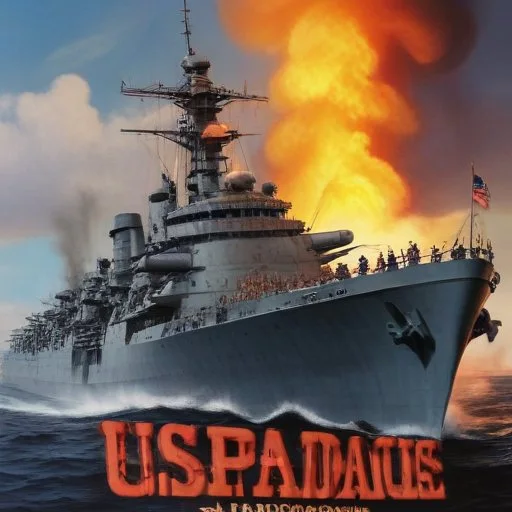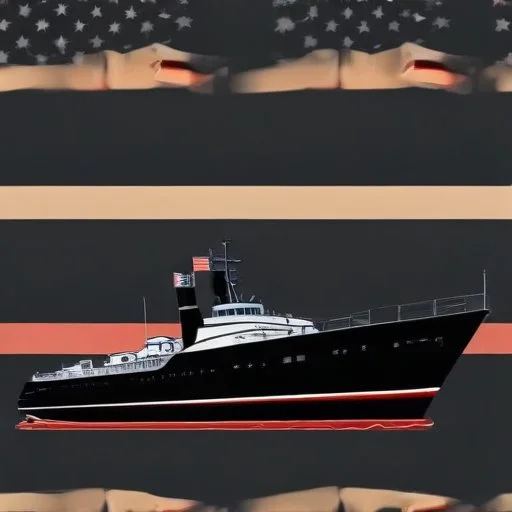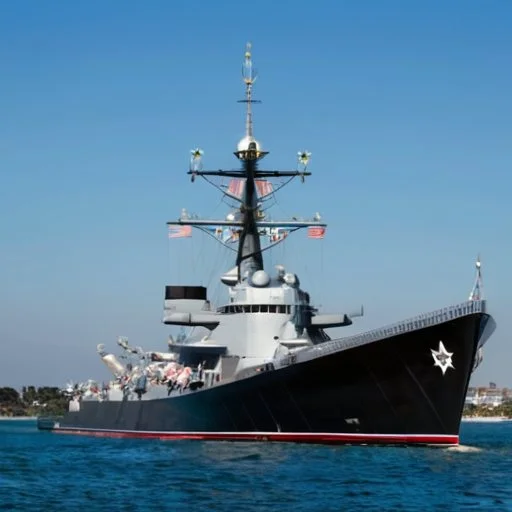In the sweltering summer of 1945, the USS Indianapolis, a stalwart heavy cruiser, embarked on a clandestine mission that would forever alter the trajectory of World War II. Carrying the crucial components of the Little Boy atomic bomb, the ship set sail from San Francisco, bound for the remote island of Tinian, where the fate of humanity hung in the balance.
Captain Charles McVay III, a seasoned naval officer, commanded the USS Indianapolis, unaware that this voyage would be his ship's final and most perilous journey. The secrecy surrounding the cargo was paramount, and only a handful of crew members knew the true nature of their mission. As the ship navigated the treacherous waters of the Pacific, the weight of their responsibility loomed large.
The USS Indianapolis had already earned a reputation as a formidable force in the Pacific, having played a crucial role in several major battles, including the Battle of Okinawa. However, it was this final mission that would prove to be its most significant contribution to the war effort.
The cargo aboard the USS Indianapolis was none other than the essential components of the Little Boy atomic bomb, a weapon of unprecedented destruction. The bomb's inventor, J. Robert Oppenheimer, had coined the phrase "I am become Death, destroyer of worlds" upon witnessing its power. As the ship sailed towards Tinian Island, the crew was oblivious to the fact that they were carrying a device capable of unleashing unprecedented devastation upon the Japanese city of Hiroshima.
The sinking of the USS Indianapolis resulted in one of the worst maritime disasters in U.S. naval history. Of the nearly 1,200 crew members on board, only about 900 survived the initial sinking. The remaining survivors were left to fend for themselves in shark-infested waters, with many succumbing to exposure, hunger, and exhaustion. The tragedy would later be remembered as one of the most horrific in U.S. naval history.
The USS Indianapolis's sacrifice was not in vain. The successful delivery of the Little Boy atomic bomb components played a crucial role in bringing a devastating end to World War II. The ship's story serves as a poignant reminder of the ultimate price paid by those who served in the war, and its legacy continues to inspire generations to come.
As we reflect on the USS Indianapolis's final mission, we are reminded of the power of human sacrifice and the devastating consequences of war. The ship's story is a testament to the bravery and dedication of those who served, and a sobering reminder of the importance of promoting peace and understanding in our world.
As the USS Indianapolis sailed towards Tinian Island, it was not the only vessel carrying a crucial cargo. The USS Hornet, an aircraft carrier, was simultaneously transporting a team of scientists, led by Dr. Ernest Lawrence, who had developed the electromagnetic separation process used to enrich uranium for the atomic bomb. This convergence of ships and scientists underscores the complexity and magnitude of the Manhattan Project, a research and development undertaking that involved over 130,000 people across the United States, Canada, and the United Kingdom.
The USS Indianapolis's secret mission was just one piece of a much larger puzzle, with multiple moving parts and players. The ship's successful delivery of the Little Boy atomic bomb components relied on the coordinated efforts of sailors, scientists, and military personnel, highlighting the intricate web of operations that defined the Allied war effort.

Captain Charles McVay III, a decorated naval officer, was a natural leader with a strong sense of duty and responsibility. Born on July 30, 1908, in ePub, Rhode Island, McVay graduated from the United States Naval Academy in 1930 and went on to serve on several ships, including the USS Indianapolis, which he commanded from November 1944 until its tragic fate in July 1945.
McVay's leadership style was characterized by his dedication to his crew and his unwavering commitment to completing the mission. Despite being unaware of the true nature of the cargo, McVay's integrity and professionalism played a crucial role in the successful delivery of the Little Boy atomic bomb components.
The USS Indianapolis's story is often compared to that of the USS Arizona, another American battleship that suffered a devastating fate during World War II. While both ships were lost in the Pacific Theater, the circumstances surrounding their sinkings were vastly different. The USS Arizona was sunk during the Japanese attack on Pearl Harbor, resulting in the loss of over 1,100 lives, whereas the USS Indianapolis was torpedoed and sunk by a Japanese submarine while en route to Tinian Island, claiming the lives of nearly 900 crew members.
Despite these differences, both ships share a common bond as symbols of American sacrifice and bravery during World War II. Their stories serve as poignant reminders of the human cost of war and the importance of honoring those who have served.

The USS Indianapolis's legacy extends beyond its role in World War II to touch the hearts of people around the world. In 1999, a replica of the USS Indianapolis's anchor was presented to the city of Indianapolis as a symbol of the ship's namesake connection to the city. This gesture represents the deep sense of pride and gratitude that Americans feel towards the ship and its crew.
The USS Indianapolis's story has also inspired numerous artistic works, including films, books, and poems. These creative expressions not only pay tribute to the ship's heroism but also serve as a testament to the enduring power of its legacy.
The USS Indianapolis's secret mission was undertaken against the backdrop of a rapidly changing geopolitical landscape. In the summer of 1945, the Allies were closing in on Japan, and the Soviet Union was preparing to declare war on the Japanese Empire. The successful delivery of the Little Boy atomic bomb components played a pivotal role in ending World War II, paving the way for the post-war reordering of the global political landscape.
The USS Indianapolis's voyage highlights the intricate relationships between the United States, Japan, and other Allied nations during this critical period. The ship's mission demonstrates the complexity and nuance of international relations, where strategy, diplomacy, and military might intersected to shape the course of history.